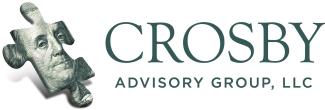
lower taxes in retirement, roof claims and earnings!
Newsletter from August 20th, to stay up to date on our newsletter subscribe here and never miss out on tips on investing, building wealth, savings on insurance and more
Summer is winding down and the kids are back to school (much to the joy of Walmart and Target)! We have a little bit of everything for you today. Enjoy the weekend! -Nate
The Reality about Roof Claims
An insurance agent was required to take updated pictures of a client’s home they serviced for 15 years. Upon submitting the pictures to the insurance company, the underwriter noticed that there were large amounts of shingles missing from the home’s roof. The underwriter then issued a notice that the insurance policy would exclude coverage for the roof until it was repaired. The homeowner got angry and stated, “What do I have insurance for?”
From the homeowner’s point of view, they purchased insurance to protect against having to fully pay out of pocket for damage to their home. The insurance company would say we will repair any sudden unforeseen damage, but it is the homeowner’s responsibility to maintain the home. A decaying roof is not unforeseen. The truth is the homeowner does not want to wait until his/her roof gets so bad that it begins to leak. The insurance company would pay to repair any resulting damage in the event of a leak, but it would not pay for a new roof. Why? Because the insurance company’s fiduciary duty is to bring the homeowner back to the point where they were before the claim. The insurance company would state that we will pay to repair the resulting damage to the ceiling and drywall, but if the roof was 30 years old, providing the homeowner with a new roof would put them in a better situation than they were prior to the claim. Additionally, the roof decaying from age is not a peril that would trigger coverage. The roof blowing off in a windstorm, would. In the long run, the homeowner will pay less money by maintaining the property rather than relying on insurance to do so.
Tax Diversity Equally Important
Investors can be so focused on the growth of their retirement accounts that they pay no attention to how the money will be taxed when withdrawn. We encourage you to always build with the end in mind.
In a perfect world, we would arrive in retirement years with diversity regarding how our money will be taxed. Ideally, we would have some assets that can be withdrawn tax-free, some that are taxed at preferential rates like long-term capital gains, and some that are taxed as ordinary income. The reality is that some high-income earners don’t have much of a choice. Many will likely require less income to meet their lifestyle needs in retirement than they are actively earning today. For these individuals, tax-deferred qualified plans will by default be their best retirement savings options. However, for most investors, the ability to diversify investments into taxable and tax-free accounts can be a powerful tool for allowing one to live off more money in retirement while paying fewer taxes.
The most common retirement savings plans have become the tax-deferred 401k and tax-deductible IRA. Both accounts are excellent options for accumulating assets because the investments can grow and compound for decades without being taxed. However, these tax-deferred accounts are not the most efficient at withdrawing money because they are taxed at ordinary income rates, which for most people will be the highest tax rates on their investments. Additionally withdraws from a tax-deferred 401k or deductible IRA can count against social security when determining if social security benefits should be taxable. These investments are often most attractive during the accumulation years because they allow investors to reduce current taxation, but a more correct view would be to say they delay taxation.
Like most things in life, balance is healthy. A balance between tax-free and taxable accounts provides the investor with greater control over their tax bracket. In theory, they could pull less from taxable accounts in times of high taxation and more from taxable accounts in times of lower taxation. At the time of writing this article, we are in a period of historically low taxation. There is talk in Washington that could change in the coming years. A tax-free option in retirement can help shield our investments from potential tax increases in the future. The Roth IRA remains the most common option for most income earners. Under current tax law, there are limits to how much you can earn and still contribute to a Roth IRA. For those who are above the income threshold, there are still options for tax-free growth, though with a little more effort. One option is a back-door Roth. IRS rules allow high-income earners to make a non-deductible Traditional IRA contribution, then convert that traditional IRA to a Roth IRA at a later date. In doing so you will pay taxes due but going forward the remaining contribution will grow tax-free and can be withdrawn tax-free from the Roth IRA.
Although it likely offers much more conservative growth, cash value life insurance also allows high-income earners a vehicle for growing money tax-free. Withdraws taken as loans against the policy can also be received tax-free. The bonus for some to this option is it includes a death benefit.
Investing in a non-qualified account, under current tax rules, potentially allows for lower taxes paid on capital gains and the ability to tax-loss harvest the account. This simply means that the account allows you to sell a losing investment to offset dividends and capital gains on other investments.
The bottom line is there are ways to position your retirement savings so that it spends efficiently. To learn more, contact us for a consultation. It is important to note that Crosby Advisory Group, LLC is a registered investment advisor and does not act as a CPA. Information in this article is for educational purposes only and should not replace specific tax advice from your tax professional.
Is the Market Overheated?
Listen to this week's podcast where Nate & Derek discuss the current standing of the market. A lot of talk has been around valuations of stocks and if the stock market is overvalued or due for a correction (Listen Here).
Earnings News!
As part of our newsletter, we want to give periodic updates about the stocks in our Crosby Advisory Tactical Model or watchlist whenever it comes up. This week was busy for earnings and we wanted to note our thoughts and provide the highlights of these earnings calls.
Terminology:
EPS: Earnings-Per-Share is profit divided by the number of shares. In essence, it tells you how much profit the shareholder gets per share they own. This number is used to calculate valuation metrics like P/E ratio
Adjusted EPS: EPS adjusted for short-term variable changes in revenue or costs circumstances or omitting revenue from sources not from the main business.
Market Cap: Total dollar market value of a company's outstanding shares of stock. It measures what a company is “worth”
P/E: Price-to-Earnings ratio measures if a stock is cheap or not. It is Share Price divided by Earnings-per-share, it measures how much investors are willing to pay for $1 of profit. A high P/E ratio compared to its competitors means a stock is more expensive. The stock price does not measure if a stock is expensive.
____________________________________________________________________________
Watchlist Stocks:
Walmart (WMT): Retail giant Walmart reported earnings on Tuesday, August 17th with a surprise EPS beat of 13.17% and a revenue beat of 2.85% driven by strong retail demand and back-to-school shopping. It also increased guidance for the rest of the year for earnings and same-store sales. Walmart is still the biggest retailer in the United States with over 500 billion dollars in retail sales. Amazon announced that they are planning to open up retail stores to increase its presence in the apparel, household items, and electronics market. The first retail stores are expected to open in Ohio and California and will feature “AmazonBasics” products as well as other goods. Walmart stock is up 3% YTD and 15% from 12 months ago and pays a 1.46% dividend
Lowes (LOW): Lowes beat both top and bottom-line expectations beating earnings estimates by 6.12% and beating revenue estimates by 3.03%. CEO Marvin Ellison attributes the growth to sustained demand from housing renovations last year as well as surging business from home improvement professionals. Shifting budgeting priorities from home improvement to other areas could taper the growth rate for lowes but Lowes is confident that the increase in demand for home improvement is sustainable for the long term. Lowes is up 29% YTD with a 1.47% dividend.
Tencent (TCEHY): On the Dynamic Growth Podcast, we discussed the recent events involving Chinese companies that are listed on American stock exchanges. As a wider issue of technology regulation in China, some of these companies have gotten hit really hard in recent weeks. Tencent is a multimedia company that operates in gaming, social media, and music streaming. They reported an earnings beat of 2.09% and a revenue miss of .43%. They are well aware of the hurdles in front of them facing more regulation. Tencent is down -23% YTD and was removed from the Tactical Model earlier in the year
Crosby Advisory Tactical Model Stocks:
Home Depot (HD): Home Depot fell after earnings because of a lackluster showing for its same-store sales metric but still showing both an earnings beat and a revenue beat of 2.33 and 1.13% respectively. Operating profit grew by 9% surprising investors that were expecting lower margins due to increases across the board in raw materials and labor. The company has made shareholder return a priority by paying 3.5M in dividend payments as well as spending close to 7 million dollars in stock buybacks in 2021. Any short-term weakness in Home Depot stock price is seen as an opportunity to add to the position and it is a core holding in the Tactical Model. It's up 24% YTD and pays a 2% dividend.
Nvidia (NVDA): We are very bullish on the outlook for Nvidia and many of the other semiconductor stocks. If your account currently holds individual stocks you likely own Nvidia. They design GPUs (Graphics Processing Units) for both consumer applications (gaming, personal/mobile computing) as well as business applications (data center, autonomous driving, artificial intelligence). They reported earnings on August 18th and reported an earnings beat of 2.27% and revenue beat of 2.67% on surging growth in their gaming and data center business. There was a poorer performance in their cryptocurrency chips but it's a smaller segment of revenue so wall street shrugged it off and the stock is trading higher for the week. Nvidia planned to acquire ARM Holdings from Softbank for $40B and the deal is being held up by regulators in the UK. The deal was supposed to go through early next year but Nvidia is saying it will likely take longer. ARM designs the chips in 90% of the world's smartphones so this would be a huge win if the deal goes through. The current outlook for the deal is pessimistic. Nvidia is up 58% YTD.
Disclaimer. Crosby Advisory Group, LLC is a registered investment advisor. Do not purchase or sell stocks mentioned in this newsletter without understanding if they are suitable for you. This newsletter is not designed to replace personal investment advice from our office. Keep in mind investing involves risk including the potential loss of principal. Understand all risks and fees before making an investment. Crosby Advisory is a licensed insurance advisor.
Nate Crosby, CRPC
ncrosby@crosbyadvisory.com
www.crosbyadvisory.com
Phone: 855.496.0770
419.496.0770
Wealth accumulation, Retirement income planning, Insurance.
Please be advised that Crosby Advisory Group, Inc does not accept orders and or instructions regarding any of your financial accounts by email, voice mail or fax. Please do not leave requests for money movements or trades as they will not be honored or fulfilled. Please leave a message including your phone number and your call will be returned as soon as possible to provide you service.

